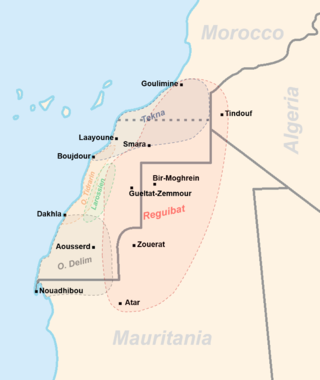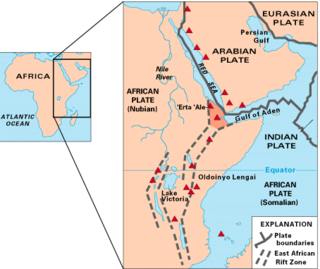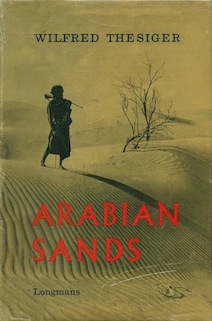Jeremy Curl | |
|---|---|
| Occupation(s) | explorer, photographer, filmmaker, writer |
| Website | jeremycurl.com |
Jeremy Robert Patrick Curl is an Anglo-Irish explorer, writer, filmmaker and photographer.
Jeremy Curl | |
|---|---|
| Occupation(s) | explorer, photographer, filmmaker, writer |
| Website | jeremycurl.com |
Jeremy Robert Patrick Curl is an Anglo-Irish explorer, writer, filmmaker and photographer.
Curl was born in Tokyo to English and Irish parents and educated at Charterhouse [1] in Surrey, where he won an art scholarship and subsequently attended the University of Utrecht and Lund University, where he read History.
Curl worked briefly at the British Museum, London, in the Ancient Egyptology department alongside renowned Egyptologist Vivien Davies where he learnt to read Egyptian hieroglyphs and awakened his love for ancient and enigmatic cultures. He has travelled widely in Africa and Asia and has worked with statesmen and artists alike, from being photographer to Cuban laureate Pablo Armando Fernández to filmmaker to the President of Latvia. While in Cuba he interviewed the Castro family about Cuba's political future. Curl has exhibited his expedition photographs widely, including alongside Nelson Mandela in 2010. In 2013 he was presented with an award for excellence in travel by Crown Prince Hamdan bin Mohammed Al Maktoum of Dubai. [2]
In 2008 he became the first non-African to cross the Tanezrouft area of the Sahara without motorized transport [3] During his time in the desert he lived with the Touareg nomads, travelling with the tribes of the Kel Ahaggar and Kel Ifoghas, witnessing their threatened lifestyle first hand. While in the Sahara he crossed the 1,200 miles (1,900 kilometres) on foot and by camel from the Hoggar mountains in Algeria to Timbuktu in Mali, reaching the city in only 50 days. He has published articles about his findings and experiences and written a basic dictionary of Tamasheq, the language of the Touareg. He was nominated for a Rolex Award for Exploration and Discovery in 2009.
In 2009 Curl spent time in Transnistria, officially the Pridnestrovian Moldovan Republic, a Leninist post-Soviet frozen conflict zone between the Ukraine and Moldova. A socialist state that borrows from the Soviet model, Transnistria is a police state of 400,000 inhabitants. Although unrecognised as a sovereign nation by any UN country, Transnistria produces its own passports, currency and stamps and runs its own police force and army. Curl returned having photographed scenes previously unseen outside the republic.
In 2010, Curl crossed the western side of the Omo River Valley in southwest Ethiopia from Dima across tribal lands southwards towards Kenya. He passed through the western Surma tribal lands, through the lands of the Bench, Dizi and Nyangatom tribes finishing on the eastern side of the Omo in the lands of the Hamer. Curl travelled with tribal escorts and scouts, changing companions from tribe to tribe, most of whom are cut off from outside influence and still continue a very traditional way of life. Curl encountered people who had never seen white men and is one of a handful of Westerners to travel across this land on foot where tribal conflict is frequent.
2010 saw Curl travel with the Rendille tribe in northern Kenya, using camels to cross the Kaisut Plain, the Ndoto Mountains and the Karoli desert. There he encountered the people of the Pokot, Samburu, Gabra and Turkana tribes. Later in the year, Curl with anthropologist Luke Glowacki from Harvard University carried out an expedition across the Danakil Depression, a volcanic desert in Ethiopia often called 'the cruellest place on Earth' and home to the Afar people. [4] It is the hottest place on Earth, with temperatures in the Danakil have been known to pass 60 degrees Celsius. Curl and Glowacki walked the ridge of volcanoes southwards, using camels to transport their water and provisions.
As a film director Curl has won the Horror Film Festival, the Netherlands (2002). He is also a published cryptographer having contributed to academic journals internationally including the journal Eidos. Curl is a keen landscape painter.
The history of Western Sahara can be traced back to the times of Carthaginian explorer Hanno the Navigator in the 5th century BC. Though few historical records are left from that period, Western Sahara's modern history has its roots linked to some nomadic groups such as the Sanhaja group, and the introduction of Islam and the Arabic language at the end of the 8th century AD.

The Bedouin, Beduin, or Bedu are nomadic Arab tribes who have historically inhabited the desert regions in the Arabian Peninsula, North Africa, the Levant, and Mesopotamia. The Bedouin originated in the Syrian Desert and Arabian Desert but spread across the rest of the Arab world in West Asia and North Africa after the spread of Islam. The English word bedouin comes from the Arabic badawī, which means "desert dweller", and is traditionally contrasted with ḥāḍir, the term for sedentary people. Bedouin territory stretches from the vast deserts of North Africa to the rocky sands of the Middle East. They are traditionally divided into tribes, or clans, and historically share a common culture of herding camels and goats. The vast majority of Bedouins adhere to Islam, although there are some fewer numbers of Christian Bedouins present in the Fertile Crescent.

The Tuareg people are a large Berber ethnic group that principally inhabit the Sahara in a vast area stretching from far southwestern Libya to southern Algeria, Niger, Mali, and Burkina Faso. Traditionally nomadic pastoralists, small groups of Tuareg are also found in northern Nigeria.

Sir Wilfred Patrick Thesiger, also known as Mubarak bin Landan was a British military officer, explorer, and writer.

The Sahrawis, or Sahrawi people, are an ethnic group and nation native to the western part of the Sahara desert, which includes the Western Sahara, southern Morocco, much of Mauritania, and along the southwestern border of Algeria. They are of mixed Hassani Arab and Sanhaji Berber descent, as well as Sub-Saharan African and other indigenous populations.

Trans-Saharan trade requires travel across the Sahara between sub-Saharan Africa and North Africa. While existing from prehistoric times, the peak of trade extended from the 8th century until the early 17th century. The Sahara once had a very different environment. In Libya and Algeria, from at least 7000 BC, there was pastoralism, the herding of sheep, goats, large settlements, and pottery. Cattle were introduced to the Central Sahara (Ahaggar) from 4000 to 3500 BC. Remarkable rock paintings in places that are currently very dry, portray flora and fauna that are not present in the modern desert environment.

Sahara with Michael Palin is a four-part BBC television series presented by British comedian and travel presenter Michael Palin, and first broadcast in 2002. In it, Palin travelled around the Sahara in Northern and Western Africa, meeting people and visiting places. The journey route included the following countries and territories: Gibraltar, Morocco, Western Sahara, Mauritania, Senegal, Mali, Niger, Libya, Tunisia, Algeria and Ceuta, Spain.

The Afar Triangle is a geological depression caused by the Afar Triple Junction, which is part of the Great Rift Valley in East Africa. The region has disclosed fossil specimens of the very earliest hominins; that is, the earliest of the human clade, and it is thought by some paleontologists to be the cradle of the evolution of humans. The Depression overlaps the borders of Eritrea, Djibouti and the entire Afar Region of Ethiopia; and it contains the lowest point in Africa, Lake Assal, Djibouti, at 155 m (509 ft) below sea level.

The Danakil Desert is a desert in northeast Ethiopia, southern Eritrea, and northwestern Djibouti. Situated in the Afar Triangle, it stretches across 136,956 square kilometres (52,879 sq mi) of arid terrain. It is inhabited by a few Afar, who engage in salt mining. The area is known for its volcanoes and extreme heat, with daytime temperatures surpassing 50 °C (122 °F). Less than 25 mm (1 in) of rainfall occurs each year. The Danakil Desert is one of the lowest and hottest places on Earth.

The Afar, also known as the Danakil, Adali and Odali, are a Cushitic-speaking ethnic group inhabiting the Horn of Africa. They primarily live in the Afar Region of Ethiopia and in northern Djibouti, as well as the entire southern coast of Eritrea. The Afar speak the Afar language, which is part of the Cushitic branch of the Afroasiatic family. Afars are the only inhabitants of the Horn of Africa whose traditional territories border both the Red Sea and the Gulf of Aden.
Méhariste is a French word that roughly translates to camel cavalry. The word is most commonly used as a designation of military units.
Desert exploration is the deliberate and scientific exploration of deserts, the arid regions of the earth. It is only incidentally concerned with the culture and livelihood of native desert dwellers. People have struggled to live in deserts and the surrounding semi-arid lands for millennia. Nomads have moved their flocks and herds to wherever grazing is available, and oases have provided opportunities for a more settled way of life. Many, such as the Bushmen in the Kalahari, the Aborigines in Australia and various Indigenous peoples of the Americas, were originally hunter-gatherers. Many trade routes have been forged across deserts, especially across the Sahara Desert, and traditionally were used by caravans of camels carrying salt, gold, ivory and other goods. Large numbers of slaves were also taken northwards across the Sahara. Today, some mineral extraction also takes place in deserts, and the uninterrupted sunlight gives potential for the capture of large quantities of solar energy.

Dallol is a locality in the Dallol woreda of northern Ethiopia. Located in Kilbet Rasu, Afar Region in the Afar Depression, it has a latitude and longitude of 14°14′19″N40°17′38″E with an elevation of about 130 metres (430 ft) below sea level. The Central Statistical Agency has not published an estimate for the 2005 population of the village, which has been described as a ghost town.

A caravan or cafila is a group of people traveling together, often on a trade expedition. Caravans were used mainly in desert areas and throughout the Silk Road, where traveling in groups aided in defense against bandits as well as helped to improve economies of scale in trade. Some of the first caravans on the Silk Road were sent out by Emperor Wu of Han in the 2nd century BCE when this vast network of roads was 'born', and as China began exporting large quantities of silk and other goods west, particularly destined for the Roman Empire.

The Sahara International Film Festival, also known as FiSahara, is an annual event which takes place in the Sahrawi refugee camps, at the southwest corner of Algeria, near the border with Western Sahara. It is the only film festival in the world held in a refugee camp. The first festival was in large part organised by Peruvian film director Javier Corcuera.

Désert is a 1980 novel written by French Nobel laureate writer J. M. G. Le Clézio, considered to be one of his breakthrough novels. It won the Académie française's Grand Prix Paul Morand in 1980.

In Search of King Solomon's Mines is a travel book by Anglo-Afghan author, Tahir Shah, relating his travels in Ethiopia with only local people for company and assistance.

Arabian Sands is a 1959 book by explorer and travel writer Wilfred Thesiger. The book focuses on the author's travels across the Empty Quarter of the Arabian Peninsula between 1945 and 1950. It attempted to capture the lives of the Bedu people and other inhabitants of the Arabian peninsula. It is considered a classic of travel literature.
John Neville Hare was a British explorer, author, and conservationist, known for campaigning for the preservation of the Wild Bactrian camel.

Between the first century BC and the fourth century AD, several expeditions and explorations to Lake Chad and western Africa were conducted by groups of military and commercial units of Romans who moved across the Sahara and into the interior of Africa and its coast, however there were a huge Romans and Greek presence in modern-day Eritrea Ethiopia. The primary motivation for the expeditions was to secure sources of gold and spices from Axumite piracies.